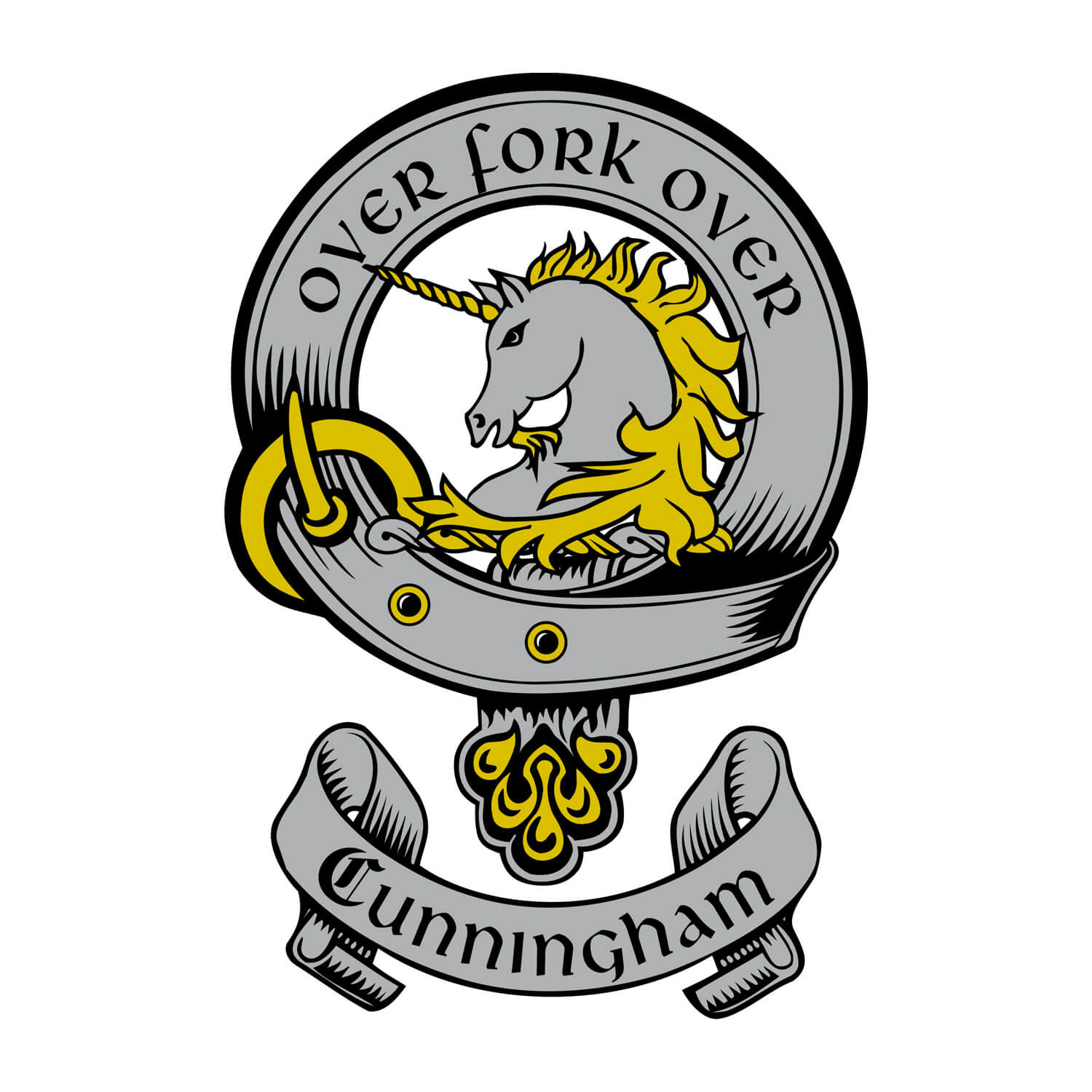Name Origin
There are many possible explanations for the unusual Scottish name Cunningham.
One of the more romantic suggestions for the original meaning behind our name is a potential link to the story surrounding King Arthur. It has been argued that King Arthur is remembered from the Gaelic version of his name, which is Cion Aodha; and Cionaodha is the Gaelic version of the Brythonic name Cunedda, where Aodha was the ancient Celtic Sun God and God of Fire.
It is also argued that both Cion and Cun (Kion and Kun), which appear in the word Cuning, mean “the King”, and also “the head” (The Chief), as in Ken and Pen. This then links to the modern name, because the modern form of Cunedda and Cionaodha is the name Kenneth, which seems to argue the name Cunningehame is perhaps linked to a person with this name (this matches the records of Frederic van Bossen, who wrote in 1688 that the first Thane of Cunninghame was a late 10th century Kenneth, the brother of Malcolm. It should be noted that this Malcolm took the name Frisken, and from an analysis of the people mentioned in van Bossen’s report he is either a relative or the grand-father, or the father of the Firsken mentioned in the story surrounding Macbeth.
It is also argued that Cunedda and Cionaodha both translate as “head dragon”. Dragon is derived from Aodh, the God of Fire, and Aodha, with an “a” added at the end of the name, means the son of Aodh. “Thus, through the use of “dh” as a diphthong, “where dh” and “dd” were anciently pronounced as “th”, the name Aodha then becomes the modern name Atha, which is now written as Arthur. This means the name Arthur relates to dragons not bears.
As can be seen, within this reconstruction, the Gaelic and English versions appear to match, and with the word Hølme (which means a small island in Old Swedish) being pronounced Halme, Cunningesholme could then perhaps be translated to King Dragon Isle
In Arthurian lore, Einion Yrth ap Cunedda was Uther Pendragon, the father of King Arthur. Yrth is Uther. Cunedda translates as Pendragon. Uther Pendragon had two sons, Owain Ddantgwyn and Cadwallon Lawhir. The name Cadwallon means Battle Leader and Lawhir means long hand. The Leader of Battles with the long hand was King Arthur of Mt Badon.
When compared to the the alternative translation, where Cunningham can be translated to mean King Island, or perhaps to mean King Inge’s Island, it has to be remembered that in Norse mythology the Yngvi were also known as the Frey. Freskin (“Frey” skin) was the father of Robert de Kilmaurs.
As can be seen, there is still much debate surrounding the origin of the name Cunningham, but ancient land records clearly argue the last part of the name is linked to the Swedish Vikings, who held substantial areas of land in Scotland, and England during the reign of King Macbeth, and the notes of the 17th century historian Frederic van Bossen also clearly state the ancestor of Kenneth de Cunninghame was a Prince of the Kingdom of Strathclyde.

Two matching dynasties
Concerning the ancient story surrounding the mythical King Arthur, who Prof. Andrew Breeze, an authority on ancient names contend was an early King Strathclyde, it is sometimes said that The Cunedda dynasty is similar to the Arthurian dynasty, on a king by king basis. This being argued in the book King Arthur Pendragon, by Nigel Dryden Cunningham. However, there are some very clear differences, and there is no surviving literature from this early period.
Cunedda dynasty
Cunedda Wledig aka Edern ap Padarn
Cunedda ap Edern
Eternus ap Cunedda aka Emrys Wledig
Einion Yrth ap Cunedda
Cadwallon Lawhir ap Einion
Owain Ddantgwyn ap Einion
Maelgwn Gwynedd
Arthurian dynasty (see Geoffrey of Monmouth)
Emperor Constantine 3rd
Emperor Constans
Ambrosius Aurelianus
Uther Pendragon
King Arthur of Mons Badonicus
King Arthur of Camlann
Mordred
